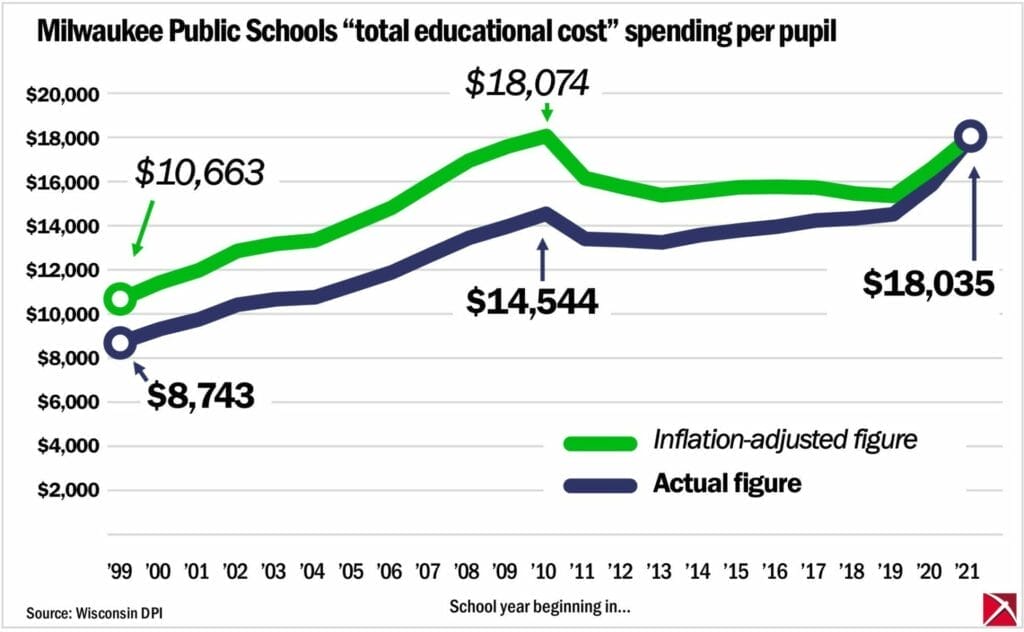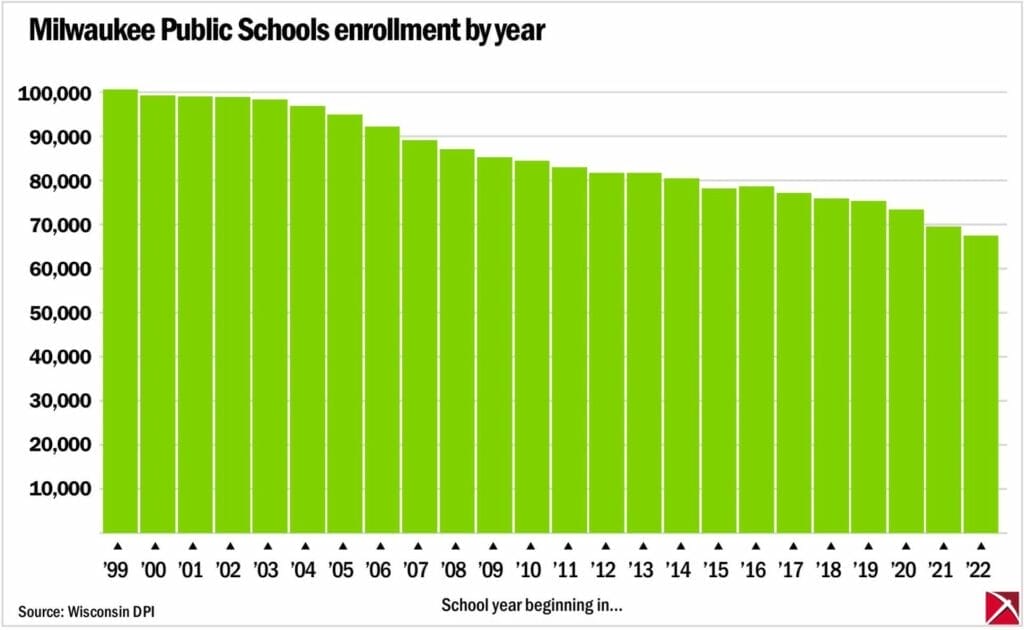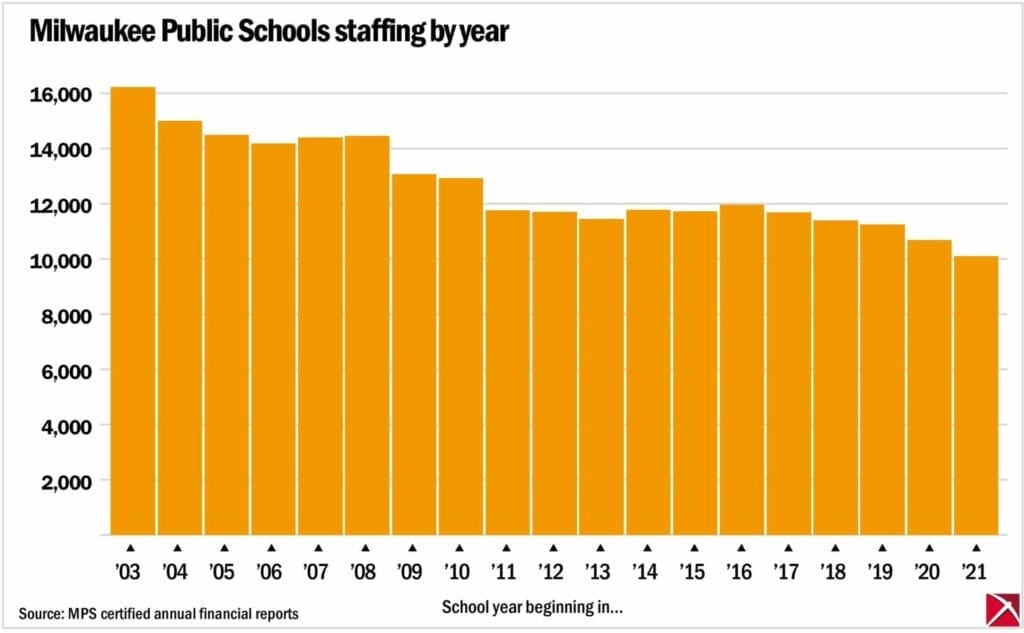
Wisconsin’s largest school district is planning to ask its voters to approve a $252 million annual increase in its revenue — and, consequently, spending — in an upcoming referendum.
That district, Milwaukee Public Schools, has seen a sharp increase in spending in the two most recent years of state data after nearly a decade of spending that mostly kept up with but did not exceed inflation.
That, in turn, followed years of steady increases in spending above the rate of inflation and, then, coinciding with the Walker-era Act 10 reforms that coupled a cut in state school aid with tools to allow districts to save money on benefits costs, a sharp drop in spending.
MPS’ referendum is set for April 2. It will ask voters whether MPS can exceed its “revenue limit” permanently. The increase would phase in over four years, starting with what MPS says would be $140 million in new annual revenue in the 2024-25 school year and ramping up to $252 million total by 2027-28.
District officials say that state funding is inadequate because it has not kept pace with inflation.
The district’s spending, however, has kept pace, roughly and with the exception of the post-Act 10 drop.

One key measure of spending comes from the Wisconsin Department of Public Instruction’s comparative cost figures, published annually. The figures total up a district’s costs in several ways.
One is “total current educational cost,” which means instructional and support services provided to students who live in a district. Another is “total educational cost,” which is the current educational cost plus spending on transportation and acquiring facilities. “Total district spending” adds in food and community service costs.
The graph above goes with the middle measure, “total educational cost,” on a per-pupil basis.
The figure, a proxy for how much MPS spent on average to educate a child, had increased on an inflation-adjusted basis by 2010-11 by about 70% over 1999-2000’s figure, the earliest that is readily available in DPI’s publicly available data. That meant an average increase over the first decade of the century by just under 5% over the rate of inflation annually.
After 2010-11, the figure dropped about 15% in three years on an inflation-adjusted basis, or about 8% in nominal dollars. The figure then rose by an average of 1% a year on a nominal basis through the 2019-20 school year, or 0.3% under inflation annually. Spending rose about 8.5% over the rate of inflation in each of the 2020-21 and 2021-22 school years, in the latter reaching the peak in inflation-adjusted terms that spending hit in 2010-11. In that most recent year of DPI data, MPS was spending just over $18,000 per pupil on education.
In the state’s most recent figures regarding MPS’ revenue, similarly for the 2021-22 school year, about 58% of the district’s revenue came from state aid, about 23% from property taxes, about 16% from federal grants and about 3% from “other local sources,” such as fees and gifts.
A central fact of school funding in Wisconsin is that it is based on the number of students enrolled in a district. MPS’ enrollment has been falling since 1997-98, when it peaked at just over 100,000 students. The district’s annual “membership” figures, as enrollment is termed in state school finance data, was 67,500 in the 2022-23 school year, the most recent for which state figures are available. That’s 33% below the figure in 1999-2000. In only one year over that period did enrollment increase year-over-year.

MPS’ staffing has fallen, too, according to figures the district publishes in its comprehensive annual fiscal reports. The figures, which do not distinguish between full- and part-time employees, show that the district employs about 38% fewer people than in 2003-04.

And while staffing fell faster than enrollment before 2010, since then, it was down about 12% by the 2021-22 school year, while enrollment was down about 17.6% over the same span.
Patrick McIlheran is the Director of Policy at the Badger Institute. Permission to reprint is granted as long as the author and Badger Institute are properly cited.
Submit a comment
"*" indicates required fields




